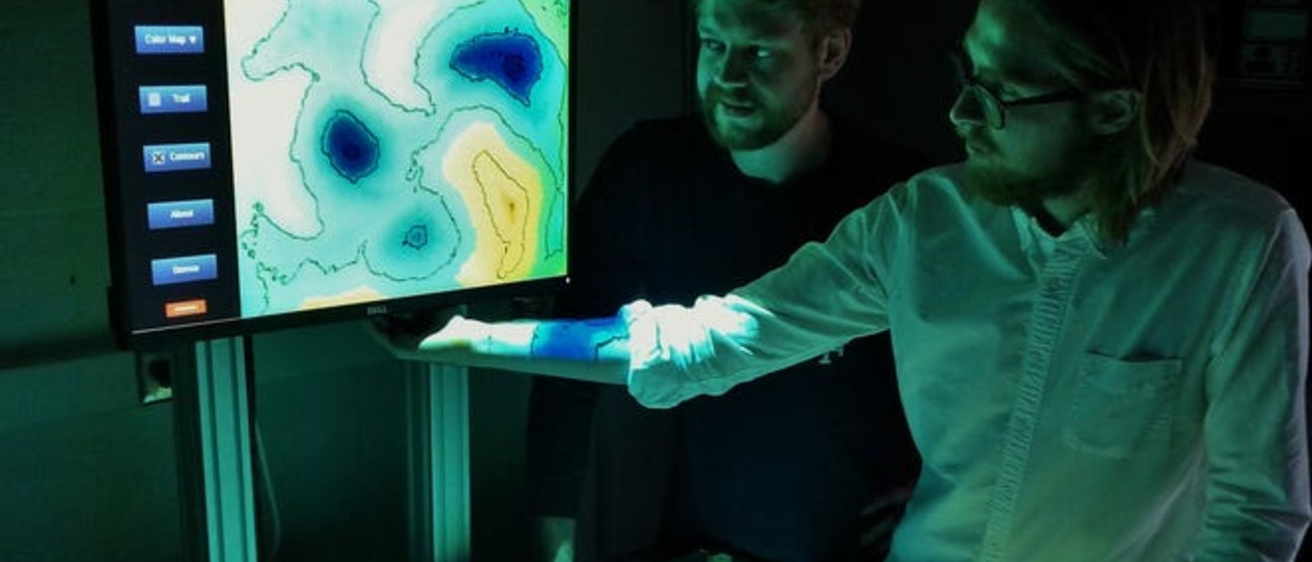by Dick Hakes, Iowa CityPress Citizen
Science-drawn kids and the public can view what is possibly the most interesting sandbox they have ever seen this Sunday afternoon at Terry Trueblood Recreation Area in Iowa City.
It’s fondly called “Gravbox” — a complex, illustrative, interactive tool developed by University of Iowa physics and astronomy students to show the amazing effects of gravity in space.
"Kids love it,” says Jacob Isbell, a UI graduating senior who wrote literally thousands of lines of computer code for the Gravbox.
“It’s hard to see what’s going on in space,” he says. “Here, kids can get their hands on it, move the sand around, see what happens — and maybe get inspired to get into science.”
You must see Gravbox to fully understand how it works, but here’s a simple summary of a typical demonstration:
The focal point of Gravbox is a raised sandbox holding 200 pounds of very fine sand about 8 inches deep. Mounted on a frame above is an infrared camera focused on the sand, plus a projector.
The infrared camera’s real-time images are processed by a computer in the base of the box, then projected in a colorful heat-map onto the sand as well as onto a computer screen mounted on the box.
Isbell digs one deep round hole in the sand to represent Earth and another smaller, not so deep hole a few inches away to represent the Moon. Gravbox interprets a deeper hole to have more mass and hence, a stronger gravitational pull.
Isbell then projects a small, animated white dot or “sprite” onto the screen, which circles around the larger hole to simulate how a satellite might orbit the Earth. When the sprite reaches a certain speed, it breaks free of the Earth’s gravity and is soon attracted by the simulated Moon’s gravity and begins an orbit there.
The sprite is captivating because it has a tail and resembles a comet but can actually represent any space object, such as a satellite, spacecraft, planet, moon or sun.
Based on the complex algorithms built into the software by the university students, the path this sprite takes accurately depicts how an orbiting object reacts to the gravitational pull of the celestial bodies around it — as dictated by the structures in the sand.
Users can “play” in the sand to create their own planets, suns or galaxies, and watch how gravity tugs at the orbiting sprite based upon the varying densities and gravitational strengths of the objects they create.
Another senior, Mason Reed, worked with Isbell last summer wrapping up the Gravbox project, which started with input and groundwork from a dedicated group of 10 physics and astronomy students as a class project.
It was all part of a $400,000 U.S. National Science Foundation grant secured by assistant professor Hai Fu to develop what is now recognized to be the first use of an “augmented-reality sandbox” for astrophysics.
Reed worked on the interface, hardware and website for the project. He cites a total three-team effort in building the Gravbox “from scratch,” which includes his using a 3-D printer to form a stand for the input box.
“What impressed me the most was going into this project blind and then realizing that the work manifested into this awesome thing I would never have imagined from day one,” he says.
Isbell presented the team’s work at a recent meeting of the American Astronomical Society in Washington, D.C. — now two Canadian universities are working to replicate the Gravbox. He says all specifications, the computer code work and instructional materials on building the tool are openly available on the university’s project website at http://astro.physics.uiowa.edu/gravbox/index.html.
He is most interested, however, in the public outreach.
“This is like rocket science 101,” Isbell says. “We need more kids in sciences, and this kind of thing lowers that barrier to entry. It makes it less scary and daunting.”
